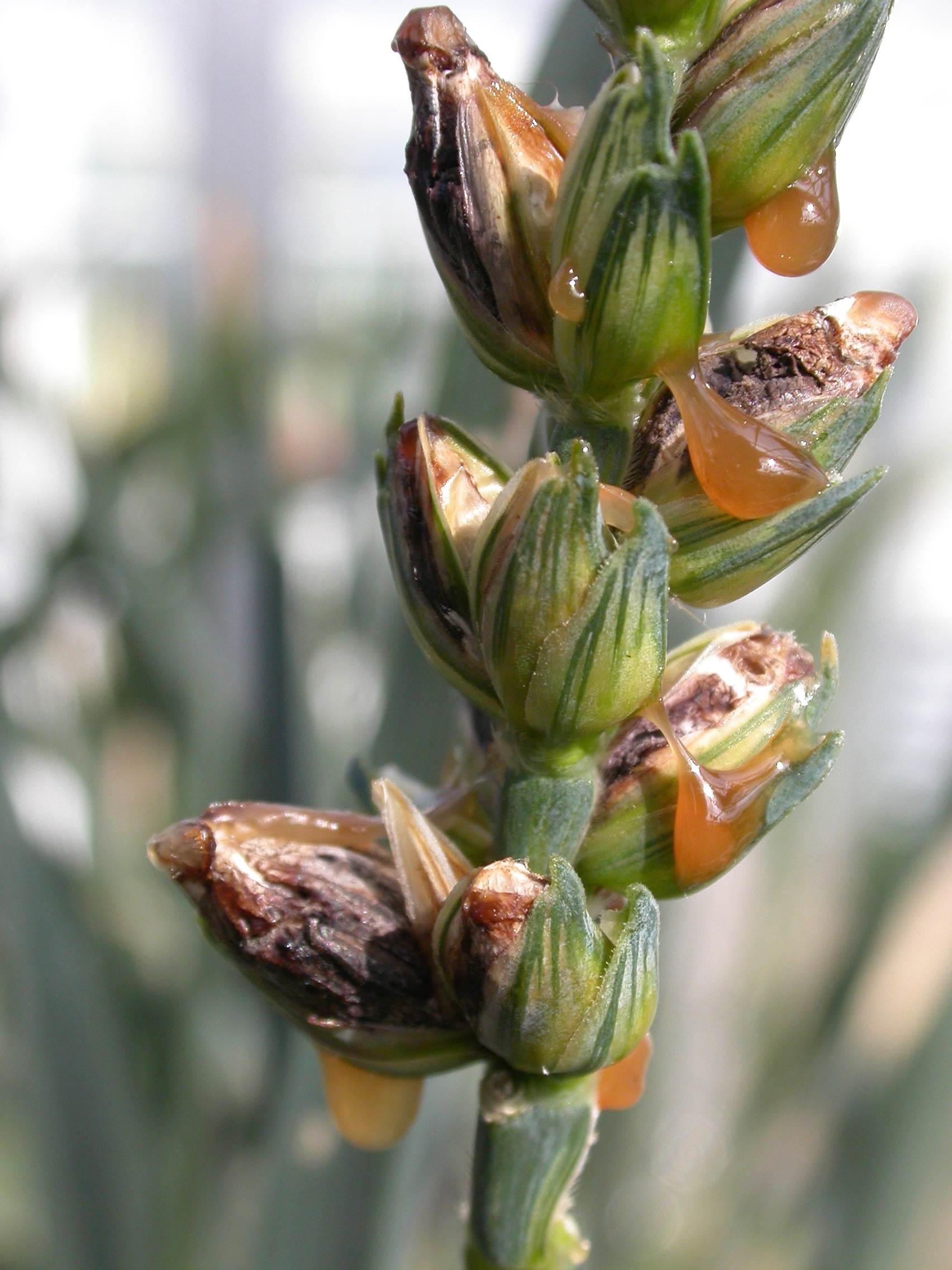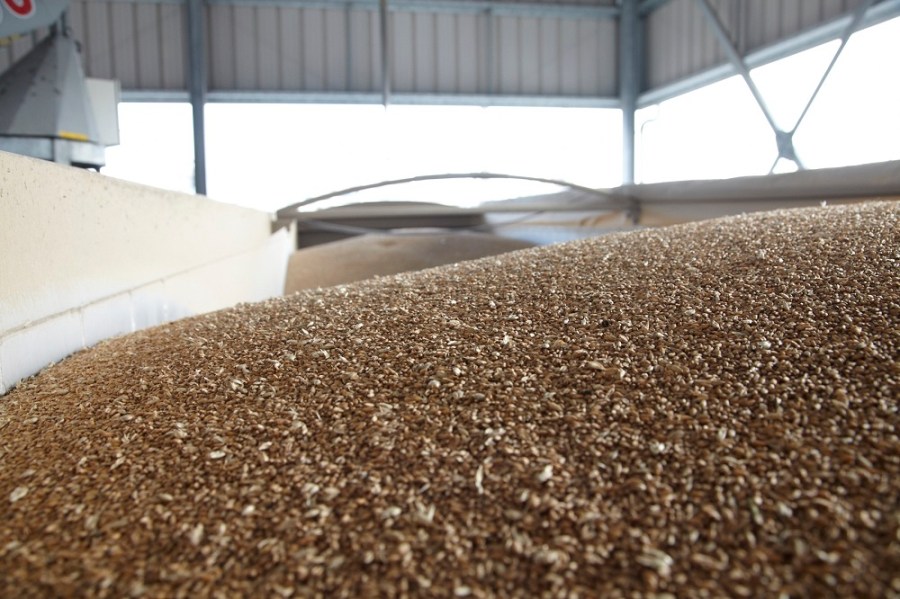As the European Commission considers a limit on alkaloids, new AHDB-funded research is trying to find out how they’re able to find their way into sclerotia-free samples of grain. CPM takes a closer look.
Can ergot alkaloids enter otherwise healthy grain while still in the cereal ear?
By Lucy de la Pasture
Ergot is a fungal disease (Claviceps purpurea) that’s been around since Biblical times, but it’s not a disease that’s recognised as a particular problem in the UK. Even though ergot’s profile isn’t what it once was, and the ergotism it causes isn’t commonly reported, it’s something that may change. The European Commission (EC) have concerns about alkaloids entering the food supply chain and are actively considering whether a maximum limit may need to be imposed.
Problems occur when the alkaloids contained with ergot sclerotia are eaten by humans or animals. Ergotism is also known as ‘St Anthony’s Fire’ after the monks in the Middle Ages who tried to alleviate patients’ severe burning symptoms in their limbs due to the vasoconstriction the alkaloids cause, which can then lead to gangrene. Other alkaloids are closely related to narcotic drugs and can interfere with neurotransmission causing a number of unpleasant symptoms, including hallucinations and convulsions.

Ergots (black sclerotia) occupy the site of the infected grain within the ear and contain alkaloids which pose a risk to human and animal health if eaten.
Although a maximum level for ergot sclerotia of 0.05% is already in place within EU Member States and in Codex standards for cereals, there’s currently no legislation setting maximum levels for the alkaloids produced by the ergot fungus, explains AHDB’s Dr Dhan Bhandari.
“The EC has had ergot on its radar for a number of years and it’s concerned that even at the higher standard for ergot sclerotia of 0.001%, already adopted by some Member States for cereals for human consumption, this may not be enough to prevent alkaloids entering the food chain,” he explains.
“The EC recognises the potential health risks from alkaloids and is considering bringing in limits but currently there’re no rapid, cost-effective tests available, which makes monitoring any new standards on grain intake into the supply chain practically impossible,” says Dhan.
AHDB recently completed a literature review of current knowledge relating to ergot alkaloids and it highlights gaps, particularly when it comes to how grain samples can test positive for alkaloids when no ergots are present. And this is where a new one-year project, led by NIAB molecular pathologist Dr Anna Gordon is attempting to reveal more about how ergot alkaloids can find their way into healthy grains.
Anna’s one of very few pathologists working on ergot and has been studying the fungus for the past decade. During a BBSRC-funded project looking at the host interaction of Claviceps purpurea at a molecular level and exploring sources of potential host resistance, she found that the fungal genes that trigger alkaloid biosynthesis are turned on within 3-5 days of infection. Her discovery means alkaloids could be present in the crop earlier and for much longer than was previously thought, she explains.
“AHDB monitoring has found alkaloids present in grain that doesn’t contain any visible ergot sclerotia. This raises the question, can ergot alkaloids enter otherwise healthy grain while still in the cereal ear through transmission from infected florets?”
So what is known about how the ergot fungus infects grain sites in ears? Sclerotia in the soil germinate in the spring, producing fruiting bodies that release wind-dispersed ascospores which can infect the crop during flowering. The spores land on the stigma and infect the ovule, where the fungus colonises and completely replaces the plant’s own tissue within 7 days. A black sclerotia (resting body) will eventually occupy the site of the infected grain within the ear.
“Conidiospores are released from infected florets in a sweet smelling, sticky exudate known as honeydew, which can cause secondary infection by physical contact between the ears, rain splash or insect spread,” she explains.
The explosion of blackgrass in many regions is one of the factors triggering concerns about the potential for increased levels of ergot in the UK. The fungus is able to infect blackgrass, and because it flowers earlier than the cereal crop, it acts as an important source of inoculum as the honeydew exuded from infected spikelets tends to coincide with anthesis in cereal crops, comments Anna.
There are several potential routes for ergot alkaloids to enter healthy grain which will be investigated. One of these may be in the honeydew, a possibility given some weight by the discovery of low levels of alkaloids in honeydew reported in a scientific paper in 2016.
“As part of the project we’re inoculating ovules with Claviceps purpurea and will collect the honeydew exuded from the florets 7-14 days after inoculation,” she adds.
“The fungus utilises plant sap and mixes its spores with it, so we already know that sugars and solutes are flowing out from the plant. This opens the question, what’s stopping alkaloids flowing in the other direction into the plant and contamination occurring through internal movement of sap?”
In an attempt to find the answer, Anna will sample grain that has set above and below four infected ovules and test them for the presence of alkaloids with project partners at Campden BRI.
Another possible route for alkaloid contamination is a physical route, where tiny fragments or dust from the ergot sclerotia become lodged in the creases of healthy grain. “We’re investigating this by smashing up mature sclerotia and tumbling the residue with wheat and barley grains to see whether the grain retains the alkaloids,” she explains.
If contamination of grain is occurring through contact with sclerotia during post-harvest processing and transport, then earlier on-farm examination and cleaning may become mandatory, along with more rigorous screening by downstream processors, adds Dhan.
“On the other hand, if contamination of grain is occurring in the ears, then there’s a need to raise the profile of this disease and to re-iterate best practice to growers to minimise the incidence of ergot in their fields.”
AHDB conducted a survey of levy-payers towards the end of 2017 to help gauge the level of understanding about ergot and its alkaloids. “Although the results are still being analysed, preliminary indications are that there’s a good awareness of ergot but the importance of its alkaloids in grain is less well understood, and relatively few growers are aware of the legislative consideration that’s ongoing at EC level,” explains Dhan.
The results from the current ergot project will help inform UK and EU policy-making, he adds. AHDB already funds a project that monitors the levels of contaminants in harvested grain destined for animal feed and the human food chain, including the presence of alkaloids.
“Testing for alkaloids is a challenging and very expensive process and in the monitoring project we’re only looking at small sample sets. The results don’t reflect the whole grain trade, but they do supply a useful snapshot,” he adds.
Dhan highlights that the AHDB factsheet on ergot produced in 2014, provides a useful summary for growers and it will be updated to include the agronomic advice being given in other countries, such as Canada where the incidences of ergot are on the rise.
“The industry is in a similar position to when the DON and ZON mycotoxins first hit the headlines in 2006. The AHDB monitoring helps create a national picture and enables us to prepare for any future legislation,” he concludes.
What are alkaloids?
Alkaloids are naturally occurring organic nitrogen-containing bases. Alkaloids have diverse and important physiological effects on humans and other animals. Well-known alkaloids include morphine, strychnine, quinine, ephedrine, nicotine, caffeine and cocaine.
There are 12 main alkaloids produced by the ergot fungus in the UK, with ergometrine, ergotamine and ergosine most common. Other alkaloids produced include ergocristine, ergocryptine (a mixture of α- and β- isomers), ergocornine, and the corresponding epimers (same chemical formula but a different spatial arrangement around one carbon atom) that can undergo interconversion under various conditions to ergopeptinines.
Alkaloid limit ‘impractical’
In the absence of a rapid test for alkaloids, any limits set by the EC would prove disruptive for the grain supply chain, says nabim’s policy and research officer Joe Brennan. The most affected grain would be rye, which is the preferred host for ergot, though all cereals would be affected.
“The most rapid test currently available to test for ergot alkaloids takes two hours to produce a result. In practice this means either grain hauliers would be delayed at mill intake while the test is carried out, or grain would have to be accepted and the test run later.
Joe points to evidence gathered in the UK which suggests that concentrating on removing the ergot sclerotia is an effective way of minimising the alkaloid content in grain. Modern screening methods using colour sorting are particularly suitable for detecting ergot sclerotia since its black colour is one of their distinguishing features, he adds.
“Our preferred method to control the level of alkaloids in grain is to focus on ergot sclerotia. Millers can then reject samples based on the presence of ergot in the sample or clean it with their equipment,” he says.
When ergot sclerotia limits were first considered by the EC in 2013, nabim devised a standard industry test for the detection of sclerotia with the help of Campden-BRI. This is now included in the code of practice for mill intakes.
If the EC does decide to impose a maximum limit on grain alkaloids without a rapid test, there’s going to be a massive financial cost to the industry, he points out. “Confirmatory tests in the lab cost £125/sample and take 10-14 days. AHDB have calculated that if all loads had to be tested in the UK this would cost the cereal industry £25M. Mills would have to conduct due diligence tests, so this cost would be felt across the whole supply chain.
“Milling is a 24/7 process and once flour is produced it is stored in bulk silos and can’t be segregated. This raises the possibility of product recalls if a sample were to later test high for alkaloids. Food safety is of paramount importance to UK millers, but we can’t be expected to comply with a limit if we can’t measure the alkaloids in our raw material,” he comments.
Joe highlights the UK has led the way on funding research on ergot and the data collected is being used to help inform the EC while they consider a limit for alkaloids. “Current research is addressing some of the knowledge gaps, such as whether fragments or dust from sclerotia can lodge in grain. If this is a route for alkaloid contamination of grain then removing sclerotia as early as possible in the supply chain would help to mitigate this risk,” he explains.
“We’ve been working with our colleagues in Europe and it’s agreed that meeting the standard imposed by an alkaloid limit is practically unworkable for processors. Control of sclerotia will remain the simplest, most cost effective and timely way of protecting consumers.”
Research roundup
AHDB Project No 21130053 Ergot alkaloid contamination of cereal grains, is being led by NIAB in partnership with Campden-BRI. The project runs from Jan 2018 to Jan 2019 at a cost of £49,792.
AHDB Project No 21130040 Monitoring of contaminants in UK cereals used for processing food and animal feed, runs from Aug 2016 to July 20121 and is led by Fera, with industry partners AIC, BOBMA, MAGB and nabim. The project receives £616,582 AHDB-funding (total £871,600).
Further information and the Ergot Factsheet can be found at cereals.ahdb.org.uk/ergot




